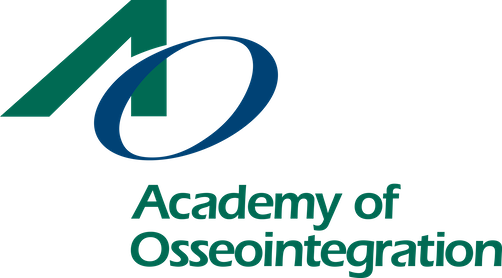-
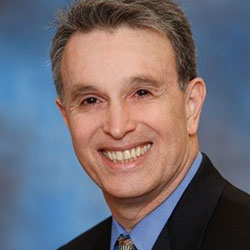 Robert Lemke, DDS, MD In implant dentistry, details count…they can add up to success, or to failure. Experienced surgeons rely on a system to ensure that all details are addressed in a methodical manner, so that none are overlooked. This course will help you to create a system that includes site analysis, preoperative medications, nuances in surgical procedures, and more for predictable success in implant surgery. Recorded - December 11, 2021
Robert Lemke, DDS, MD In implant dentistry, details count…they can add up to success, or to failure. Experienced surgeons rely on a system to ensure that all details are addressed in a methodical manner, so that none are overlooked. This course will help you to create a system that includes site analysis, preoperative medications, nuances in surgical procedures, and more for predictable success in implant surgery. Recorded - December 11, 2021 -
 Andrea Ravidà, DDS During the last decade, short implants (≤6mm) have been shown to be a reliable and effective solution for patients with posterior bone atrophy. This presentation will explore in detail the scientific literature on short implants, providing evidence-based guidelines for clinicians concerning their use. Furthermore, the benefits and disadvantages of short implants in comparison to bone regenerative therapies in conjunction with standard length implant placement will be discussed. Recorded - October 20, 2021
Andrea Ravidà, DDS During the last decade, short implants (≤6mm) have been shown to be a reliable and effective solution for patients with posterior bone atrophy. This presentation will explore in detail the scientific literature on short implants, providing evidence-based guidelines for clinicians concerning their use. Furthermore, the benefits and disadvantages of short implants in comparison to bone regenerative therapies in conjunction with standard length implant placement will be discussed. Recorded - October 20, 2021 -
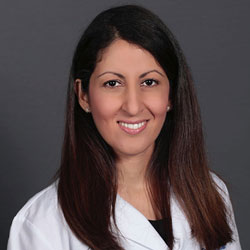 Ghadeer Thalji, DDS, PhD Success of dental implants requires the clinicians to understand the many factors that must come together to achieve long term outcomes. The lecture will explore the current scientific evidence on decisions related to the number of dental implants in various clinical scenarios of the partially and fully edentulous patients. Recorded - September 21, 2021
Ghadeer Thalji, DDS, PhD Success of dental implants requires the clinicians to understand the many factors that must come together to achieve long term outcomes. The lecture will explore the current scientific evidence on decisions related to the number of dental implants in various clinical scenarios of the partially and fully edentulous patients. Recorded - September 21, 2021 -
 Roya Zandparsa, DDS, MSc, DMD AI technology has been used in many aspects of human society, including medicine, and it is also being used more and more widely in dentistry. The applications extend from the research and development of new dental materials to diagnostic tools(e.g., to detect caries, periapical lesions, and periodontal disease), to treatment planning and oral health care delivery, to the post-treatment monitoring and follow-ups. In this presentation the basic concepts and principles of AI, the new advancements, new approaches, and applications of AI along with other digital technologies in dentistry will be discussed. Recorded March 15, 2022
Roya Zandparsa, DDS, MSc, DMD AI technology has been used in many aspects of human society, including medicine, and it is also being used more and more widely in dentistry. The applications extend from the research and development of new dental materials to diagnostic tools(e.g., to detect caries, periapical lesions, and periodontal disease), to treatment planning and oral health care delivery, to the post-treatment monitoring and follow-ups. In this presentation the basic concepts and principles of AI, the new advancements, new approaches, and applications of AI along with other digital technologies in dentistry will be discussed. Recorded March 15, 2022 -
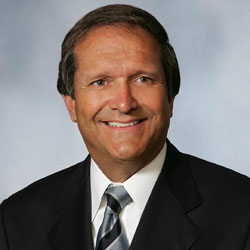 Roger Wise, DDS, MS The orthodontic profession has only recently focused its attention towards patient driven diagnosis and treatment planning. It is difficult to imagine practicing dentistry today without the utilization of dental implants. Smile esthetics can be very challenging or even compromised when implants are involved. In problem-oriented implant treatment planning the orthodontist may help establish a diagnosis that identifies possible improvement or even correction of hard and soft tissue. This lecture will also demonstrate how to establish occlusal and/or spacial relationships prior to implant placement. Recorded - March 31, 2021
Roger Wise, DDS, MS The orthodontic profession has only recently focused its attention towards patient driven diagnosis and treatment planning. It is difficult to imagine practicing dentistry today without the utilization of dental implants. Smile esthetics can be very challenging or even compromised when implants are involved. In problem-oriented implant treatment planning the orthodontist may help establish a diagnosis that identifies possible improvement or even correction of hard and soft tissue. This lecture will also demonstrate how to establish occlusal and/or spacial relationships prior to implant placement. Recorded - March 31, 2021 -
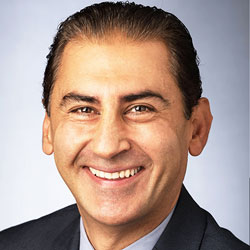 Ilser Turkyilmaz, DDS, PhD Implant-supported fixed dental prostheses improve the quality of life of edentulous patients experiencing functional and esthetic problems associated with complete dentures. CAD/CAM technology has recently revolutionized the field of implant dentistry. CAD/CAM surgical guides have greatly improved the predictability of implant surgery and the CAD/CAM fabrication of frameworks has resulted in elimination of distortion, better fit, fewer fabrication steps, and faster turn-around. All of these advancements offer improved experience for the patient, decreased treatment time, and greater accessibility. Basic clinical and laboratory procedures for restoring edentulous arches with CAD/CAM surgical guides and implant-supported fixed prostheses will be discussed. Recorded - January 11, 2021
Ilser Turkyilmaz, DDS, PhD Implant-supported fixed dental prostheses improve the quality of life of edentulous patients experiencing functional and esthetic problems associated with complete dentures. CAD/CAM technology has recently revolutionized the field of implant dentistry. CAD/CAM surgical guides have greatly improved the predictability of implant surgery and the CAD/CAM fabrication of frameworks has resulted in elimination of distortion, better fit, fewer fabrication steps, and faster turn-around. All of these advancements offer improved experience for the patient, decreased treatment time, and greater accessibility. Basic clinical and laboratory procedures for restoring edentulous arches with CAD/CAM surgical guides and implant-supported fixed prostheses will be discussed. Recorded - January 11, 2021 -
 Martina Stefanini, DDS, PhD The recession of the buccal soft tissue margin is a frequent complication of well integrated dental implants. The appearance of metallic structure or even their transparency through the thin buccal soft tissues are common reasons for patient aesthetic complains. Moreover, bad implant installation frequently results in excessive apical dislocation of the buccal soft tissue margin of the implant supported crown. Soft tissue plastic surgical procedures and bilaminar techniques in particular, can be successfully used in combination with a pre and postsurgical prostethic approaches to increase the volume of the interdental soft tissue, to treat buccal gingival recessions and soft tissue dehiscence around dental implants and to provide the new implant supported crown with an esthetic transmucosal emergency profile. Recorded - May 4, 2021
Martina Stefanini, DDS, PhD The recession of the buccal soft tissue margin is a frequent complication of well integrated dental implants. The appearance of metallic structure or even their transparency through the thin buccal soft tissues are common reasons for patient aesthetic complains. Moreover, bad implant installation frequently results in excessive apical dislocation of the buccal soft tissue margin of the implant supported crown. Soft tissue plastic surgical procedures and bilaminar techniques in particular, can be successfully used in combination with a pre and postsurgical prostethic approaches to increase the volume of the interdental soft tissue, to treat buccal gingival recessions and soft tissue dehiscence around dental implants and to provide the new implant supported crown with an esthetic transmucosal emergency profile. Recorded - May 4, 2021 -
 Preetinder Singh, DDS, MS Bone regeneration is often needed prior to dental implant treatment due to the lack of adequate quantity and quality after infectious diseases. The greatest regenerative power can be obtained with autologous tissue, primarily the bone alive, taken from the same site or adjacent sites, up to the use centrifugation of blood with the selection of the parts with the greatest potential regenerative. In fact, various techniques and technologies were chronologically successive to cope with an ever better preparation of these concentrates of blood. Our aim is to know these advances and discuss the ways in which platelet concentrates may provide such unexpected beneficial therapeutic effects. Most of the growth factors derived from autologous blood is released upon platelet activation, and their clinical use has been popularized with Platelet-rich plasma (PRP), Platelet rich fibrin (PRF) & its advancements namely A-PRF & i-PRF, Concentrated Growth Factors (CGF), Sticky Bone Concept etc. It is time to use this ‘blood’ in different ways to achieve regenerative potentials in the field of implant dentistry. Recorded - January 20, 2021
Preetinder Singh, DDS, MS Bone regeneration is often needed prior to dental implant treatment due to the lack of adequate quantity and quality after infectious diseases. The greatest regenerative power can be obtained with autologous tissue, primarily the bone alive, taken from the same site or adjacent sites, up to the use centrifugation of blood with the selection of the parts with the greatest potential regenerative. In fact, various techniques and technologies were chronologically successive to cope with an ever better preparation of these concentrates of blood. Our aim is to know these advances and discuss the ways in which platelet concentrates may provide such unexpected beneficial therapeutic effects. Most of the growth factors derived from autologous blood is released upon platelet activation, and their clinical use has been popularized with Platelet-rich plasma (PRP), Platelet rich fibrin (PRF) & its advancements namely A-PRF & i-PRF, Concentrated Growth Factors (CGF), Sticky Bone Concept etc. It is time to use this ‘blood’ in different ways to achieve regenerative potentials in the field of implant dentistry. Recorded - January 20, 2021 -
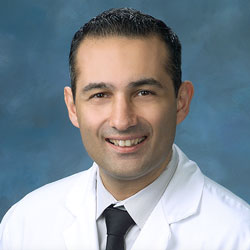 T. Cem Sayin, DDS, PhD Clinicians are confronted with difficult decisions regarding whether a tooth with pulpal and/or periapical disease should be saved through endodontic treatment or be extracted and replaced with an implant. This lecture will review the endodontic and implant literature as well as the related factors that need to be considered by the clinician affecting decision making for their patients. Recorded - February 03, 2021
T. Cem Sayin, DDS, PhD Clinicians are confronted with difficult decisions regarding whether a tooth with pulpal and/or periapical disease should be saved through endodontic treatment or be extracted and replaced with an implant. This lecture will review the endodontic and implant literature as well as the related factors that need to be considered by the clinician affecting decision making for their patients. Recorded - February 03, 2021 -
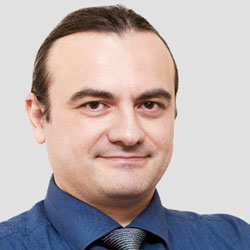 Kaan Orhan, DDS, MSc, MHM, PhD Dental implants have become part of routine treatment plans in many dental offices because of their popularity and acceptance by patients. Appropriate pre-placement planning, in which imaging plays a pivotal role, helps to ensure a satisfactory outcome. The development of precise pre-surgical imaging techniques and surgical templates allows the dentist to place these implants with relative ease and predictability. This presentation gives an overview of current practices in implant imaging for the practicing, with emphasis on selection criteria for imaging. Contemporary imaging techniques such as USG, MRI for dental implant planning, surgical phase, and also follow-up treatment will be discussed. Recorded - June 1, 2021
Kaan Orhan, DDS, MSc, MHM, PhD Dental implants have become part of routine treatment plans in many dental offices because of their popularity and acceptance by patients. Appropriate pre-placement planning, in which imaging plays a pivotal role, helps to ensure a satisfactory outcome. The development of precise pre-surgical imaging techniques and surgical templates allows the dentist to place these implants with relative ease and predictability. This presentation gives an overview of current practices in implant imaging for the practicing, with emphasis on selection criteria for imaging. Contemporary imaging techniques such as USG, MRI for dental implant planning, surgical phase, and also follow-up treatment will be discussed. Recorded - June 1, 2021 -
 Alpdogan Kantarci, DDS, MS, PhD Peri-implant diseases present a major challenge in dental practice. Treatment options for advanced diseases around dental implants are limited. While there are several similarities between periodontal and peri-implant diseases in their pathogenesis and microbial etiologies, periodontal treatment strategies are not readily applicable to the treatment of peri-implant mucositis and peri-implantitis. One of the key differences is the characteristics of the implant surfaces. In this presentation, emerging preventive and therapeutic approaches will be discussed with an emphasis on geriatric patient population. Recorded - April 21, 2021
Alpdogan Kantarci, DDS, MS, PhD Peri-implant diseases present a major challenge in dental practice. Treatment options for advanced diseases around dental implants are limited. While there are several similarities between periodontal and peri-implant diseases in their pathogenesis and microbial etiologies, periodontal treatment strategies are not readily applicable to the treatment of peri-implant mucositis and peri-implantitis. One of the key differences is the characteristics of the implant surfaces. In this presentation, emerging preventive and therapeutic approaches will be discussed with an emphasis on geriatric patient population. Recorded - April 21, 2021 -
 Robert Lemke, DDS, MD This is an update after one-year of being in the trenches of COVID-19. What do we know now. Why we will need masks for another year and which ones to avoid. I will review immunology as it applies to COVID-19. Vaccines from history, phase studies, mechanisms, herd protection and mutations will all be reviewed. Finally an intro to being a vaccine injection center will be introduced. Recorded - March 4, 2021
Robert Lemke, DDS, MD This is an update after one-year of being in the trenches of COVID-19. What do we know now. Why we will need masks for another year and which ones to avoid. I will review immunology as it applies to COVID-19. Vaccines from history, phase studies, mechanisms, herd protection and mutations will all be reviewed. Finally an intro to being a vaccine injection center will be introduced. Recorded - March 4, 2021 -
 Derrick Pylant, DDS In this presentation we will discuss the indications for alveolar ridge preservation and immediate implant placement. Bio-material selection, surgical technique, and timing of implant placement will be highlighted with a clinical emphasis on practical and predictable techniques. Recorded - August 14, 2021
Derrick Pylant, DDS In this presentation we will discuss the indications for alveolar ridge preservation and immediate implant placement. Bio-material selection, surgical technique, and timing of implant placement will be highlighted with a clinical emphasis on practical and predictable techniques. Recorded - August 14, 2021 -
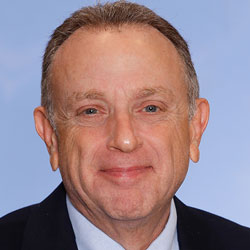 Robert Vogel, DDS This fast-moving clinical based presentation will provide a step by step approach to diagnosis and treatment of the fully and partially edentulous patient with removable prosthesis including overdentures and implant retained removable partial dentures. Scientifically based tips, tricks and techniques will be presented to assure long-term success with precision, productivity and ideal patient care. Issues discussed will include ideal number and position of implants, attachment selection, prosthesis design and introduction of all new prosthetics components. Recorded - December 3, 2022
Robert Vogel, DDS This fast-moving clinical based presentation will provide a step by step approach to diagnosis and treatment of the fully and partially edentulous patient with removable prosthesis including overdentures and implant retained removable partial dentures. Scientifically based tips, tricks and techniques will be presented to assure long-term success with precision, productivity and ideal patient care. Issues discussed will include ideal number and position of implants, attachment selection, prosthesis design and introduction of all new prosthetics components. Recorded - December 3, 2022 -
 Irene Marron-Tarrazzi, DMD, MS This webinar will discuss contemporary approaches for minimally invasive and predictable treatment of soft tissue deformities using microsurgical techniques in periodontal and implant surgery. Upon completion of this presentation, participants should be able to: 1) Explore different surgical techniques where periodontal microsurgical principles can be applied. 2) Describe what the adequate amount of soft tissue management and gingival volume required for peri-implant esthetics. 3) Explain the key factors for a successful outcome. Recorded - January 20, 2024
Irene Marron-Tarrazzi, DMD, MS This webinar will discuss contemporary approaches for minimally invasive and predictable treatment of soft tissue deformities using microsurgical techniques in periodontal and implant surgery. Upon completion of this presentation, participants should be able to: 1) Explore different surgical techniques where periodontal microsurgical principles can be applied. 2) Describe what the adequate amount of soft tissue management and gingival volume required for peri-implant esthetics. 3) Explain the key factors for a successful outcome. Recorded - January 20, 2024 -
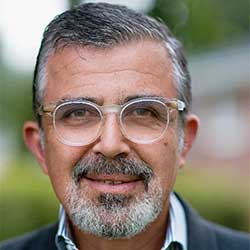 Irene Marron-Tarrazzi, DMD, MS The successful fabrication and delivery of fixed implant supported prosthesis is dependent upon a systematic interplay between the surgical and prosthetic treatment planning objectives. A paradigm shift has taken place as the Graftless surgical approach has gained credibility. Reduced treatment time, a single stage surgical reconstructions and immediate loading has resulted in a higher degree of case acceptance. Upon completion of this presentation, participants should be able to: 1) Identify the appropriate number of implants for full arch reconstructions. 2) Discuss the proper distribution of implants for full arch reconstructions. 3) Explain the use of Axial, tilted and zygoma implants for full arch maxillary reconstructions. Recorded - February 10, 2024
Irene Marron-Tarrazzi, DMD, MS The successful fabrication and delivery of fixed implant supported prosthesis is dependent upon a systematic interplay between the surgical and prosthetic treatment planning objectives. A paradigm shift has taken place as the Graftless surgical approach has gained credibility. Reduced treatment time, a single stage surgical reconstructions and immediate loading has resulted in a higher degree of case acceptance. Upon completion of this presentation, participants should be able to: 1) Identify the appropriate number of implants for full arch reconstructions. 2) Discuss the proper distribution of implants for full arch reconstructions. 3) Explain the use of Axial, tilted and zygoma implants for full arch maxillary reconstructions. Recorded - February 10, 2024 -
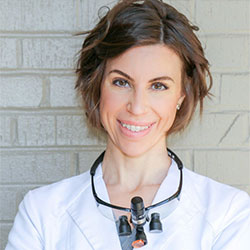 Courtney Donkoh, DDS This presentation will familiarize the audience with several types of facial growth patterns, as described in the literature by Dr. Arne Bjork. The audience will learn how to assess mandibular rotation and understand how to differentiate the various types of mandibular rotation, as described in the literature by Dr. Peter Buschang. Along the way, we will discuss interventions that influence mandibular rotation. Upon completion of this presentation, participants should be able to: 1) Describe the three types of forward mandibular rotation and two types of backward mandibular rotation. 2) Explain the difference between matrix rotation and true rotation of the mandible and describe how to assess both. 3) Identify six interventions that influence mandibular rotation. Recorded – March 19, 2024
Courtney Donkoh, DDS This presentation will familiarize the audience with several types of facial growth patterns, as described in the literature by Dr. Arne Bjork. The audience will learn how to assess mandibular rotation and understand how to differentiate the various types of mandibular rotation, as described in the literature by Dr. Peter Buschang. Along the way, we will discuss interventions that influence mandibular rotation. Upon completion of this presentation, participants should be able to: 1) Describe the three types of forward mandibular rotation and two types of backward mandibular rotation. 2) Explain the difference between matrix rotation and true rotation of the mandible and describe how to assess both. 3) Identify six interventions that influence mandibular rotation. Recorded – March 19, 2024 -
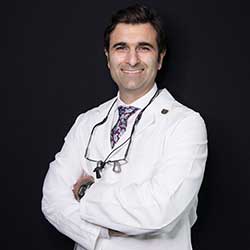 Sam Shamardi, DMD This course will provide an overview of several essential factors that a dental professional needs to succeed as an individual and practice owner from graduation day to retirement. Upon completion of this presentation, participants should be able to: 1) Identify best options for student loan repayment. 2) Explain why saving from day one is essential. 3) Describe important lifestyle and work habits that need to be considered for long term success. Recorded – March 26, 2024
Sam Shamardi, DMD This course will provide an overview of several essential factors that a dental professional needs to succeed as an individual and practice owner from graduation day to retirement. Upon completion of this presentation, participants should be able to: 1) Identify best options for student loan repayment. 2) Explain why saving from day one is essential. 3) Describe important lifestyle and work habits that need to be considered for long term success. Recorded – March 26, 2024 -
 Nermin Tarhan, MS Personalized medicine requires individual risk assessment as an integral part of the diagnostic, therapeutic, and prognostic processes. Despite categoric evaluation of most medical diseases/disorders, it is crucial to evaluate each patient individually. Peri-implantitis is one of the important complications of dental implant treatments and in many cases management of peri-implantitis can be quite challenging for dental professionals. Thus, prevention of peri-implantitis is suggested to be of utmost importance. Upon completion of this presentation, participants should be able to: 1) Describe personalized medicine, and individual risk assessment. 2) Explain the challenge and complexity of successful management of peri-implantitis. 3) Identify the essential elements of risk assessment for prevention of peri-implantitis. Record on November 20th
Nermin Tarhan, MS Personalized medicine requires individual risk assessment as an integral part of the diagnostic, therapeutic, and prognostic processes. Despite categoric evaluation of most medical diseases/disorders, it is crucial to evaluate each patient individually. Peri-implantitis is one of the important complications of dental implant treatments and in many cases management of peri-implantitis can be quite challenging for dental professionals. Thus, prevention of peri-implantitis is suggested to be of utmost importance. Upon completion of this presentation, participants should be able to: 1) Describe personalized medicine, and individual risk assessment. 2) Explain the challenge and complexity of successful management of peri-implantitis. 3) Identify the essential elements of risk assessment for prevention of peri-implantitis. Record on November 20th

